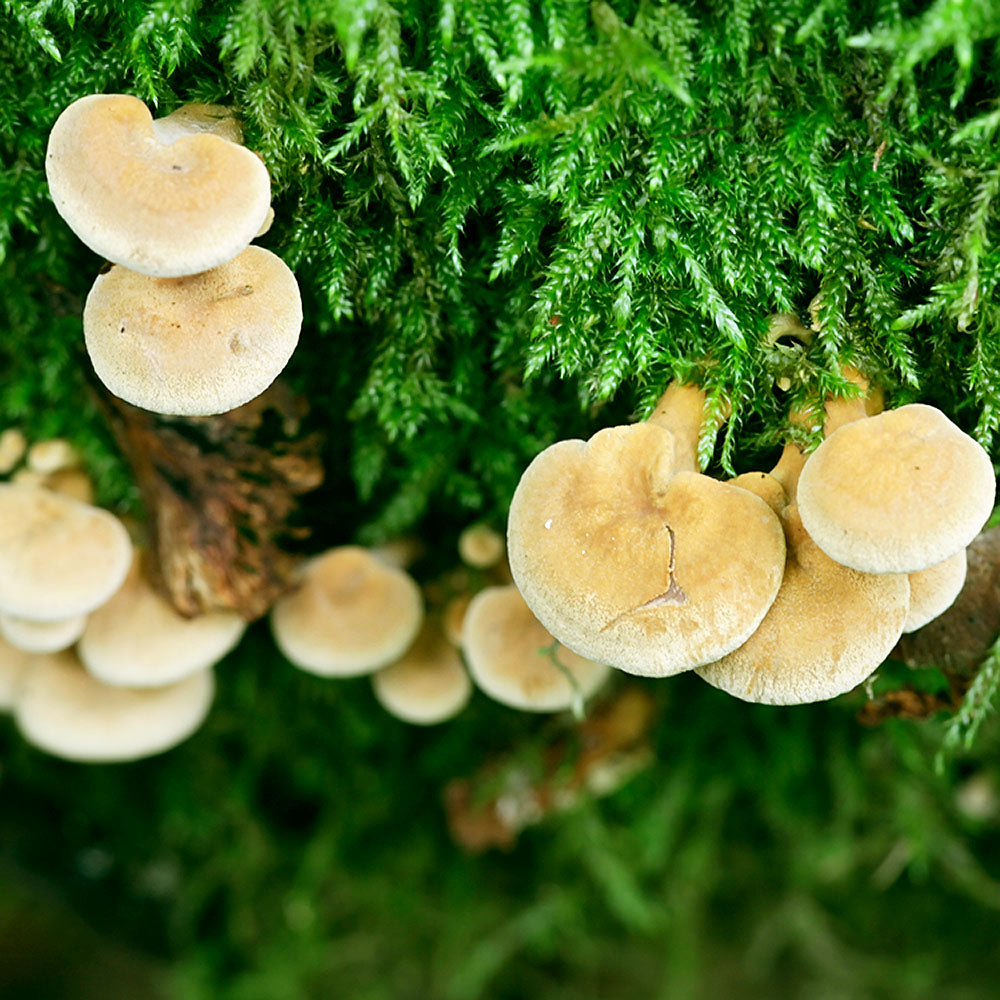Description
- Panellus Bio-luminescent Liquid Culture in 10cc Syringe
- Young, healthy mycelium ensuring a glowing cultivation experience
- Unique bio-luminescent strain, lighting up your cultivation journey
- Ideal for inoculating grains, agar dishes, and other substrates
- Best stored in a cool, dark place to maintain its luminescent properties
- Genetically stable and resistant to common contaminants
Panellus, Bio-luminescent (Panellus stipticus) Liquid Culture
Hey there, fellow mushroom enthusiast! Ever heard of a mushroom that literally lights up your world? Meet the Panellus Bio-luminescent, scientifically known as Panellus stipticus. This unique mushroom not only grows but also glows, making it a fascinating addition to any cultivator's collection. And with our 10cc liquid culture syringe, you're all set to embark on this luminous journey!
Taxonomy Breakdown
For the science buffs out there, here's a quick breakdown:
- Kingdom: Fungi
- Phylum: Basidiomycota
- Class: Agaricomycetes
- Order: Agaricales
- Family: Mycenaceae
- Genus: Panellus
- Species: stipticus
Natural Habitat & Growth Patterns
The Panellus Bio-luminescent is a woodland wonder, often found on decaying logs and stumps. It thrives in cool, humid environments and prefers temperatures between 60°F to 70°F. These mushrooms typically fruit during the colder months, lighting up the forest floor with their mesmerizing glow.
Cultivation Specifics
When cultivating Panellus, hardwood substrates are your go-to. They flourish in temperatures between 65°F to 75°F and require a high humidity environment. While they don't need much light, a bit of indirect light can enhance their bio-luminescence. Regular fresh air exchanges are essential, and always be on the lookout for any signs of contamination. But with our liquid culture's robust genetics, you're in safe hands.
Edibility & Uses
While the Panellus Bio-luminescent is a sight to behold, it's not recommended for consumption. Always remember to enjoy its beauty and not its taste.
Disclaimer
As always, never consume unidentified mushrooms. This product is designed for cultivation purposes and is not intended to treat or cure any disease.
Why Out-Grow's Liquid Culture?
At Out-Grow, we're more than just a brand; we're a community of mushroom lovers. Our liquid cultures are a testament to our dedication and expertise. With the Panellus Bio-luminescent liquid culture, you're not just getting a product; you're joining a luminous journey of discovery. So, ready to light up your cultivation world?
Panellus, Bio-luminescent (Panellus stipticus)
Product Overview
Ideal Conditions
Cultivation Tips
Storage
Edibility
Safety and Disclaimer
Description
- Panellus Bio-luminescent Liquid Culture in 10cc Syringe
- Young, healthy mycelium ensuring a glowing cultivation experience
- Unique bio-luminescent strain, lighting up your cultivation journey
- Ideal for inoculating grains, agar dishes, and other substrates
- Best stored in a cool, dark place to maintain its luminescent properties
- Genetically stable and resistant to common contaminants
Panellus, Bio-luminescent (Panellus stipticus) Liquid Culture
Hey there, fellow mushroom enthusiast! Ever heard of a mushroom that literally lights up your world? Meet the Panellus Bio-luminescent, scientifically known as Panellus stipticus. This unique mushroom not only grows but also glows, making it a fascinating addition to any cultivator's collection. And with our 10cc liquid culture syringe, you're all set to embark on this luminous journey!
Taxonomy Breakdown
For the science buffs out there, here's a quick breakdown:
- Kingdom: Fungi
- Phylum: Basidiomycota
- Class: Agaricomycetes
- Order: Agaricales
- Family: Mycenaceae
- Genus: Panellus
- Species: stipticus
Natural Habitat & Growth Patterns
The Panellus Bio-luminescent is a woodland wonder, often found on decaying logs and stumps. It thrives in cool, humid environments and prefers temperatures between 60°F to 70°F. These mushrooms typically fruit during the colder months, lighting up the forest floor with their mesmerizing glow.
Cultivation Specifics
When cultivating Panellus, hardwood substrates are your go-to. They flourish in temperatures between 65°F to 75°F and require a high humidity environment. While they don't need much light, a bit of indirect light can enhance their bio-luminescence. Regular fresh air exchanges are essential, and always be on the lookout for any signs of contamination. But with our liquid culture's robust genetics, you're in safe hands.
Edibility & Uses
While the Panellus Bio-luminescent is a sight to behold, it's not recommended for consumption. Always remember to enjoy its beauty and not its taste.
Disclaimer
As always, never consume unidentified mushrooms. This product is designed for cultivation purposes and is not intended to treat or cure any disease.
Why Out-Grow's Liquid Culture?
At Out-Grow, we're more than just a brand; we're a community of mushroom lovers. Our liquid cultures are a testament to our dedication and expertise. With the Panellus Bio-luminescent liquid culture, you're not just getting a product; you're joining a luminous journey of discovery. So, ready to light up your cultivation world?



